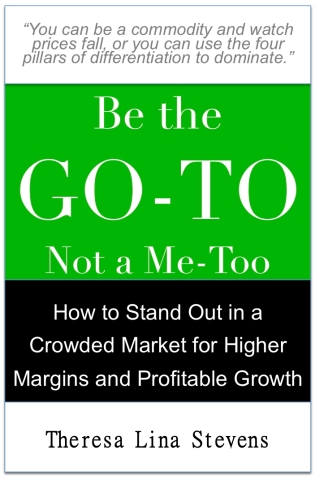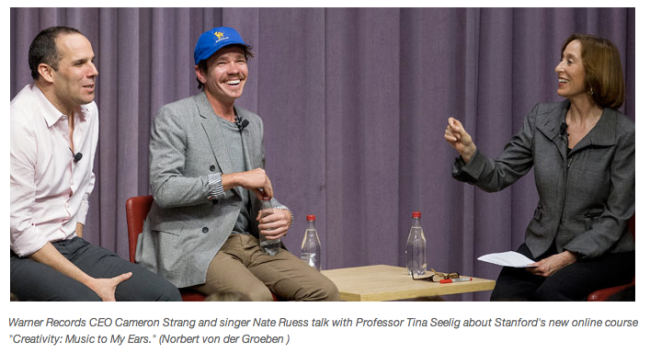Branding. One simple word. So many meanings.
I’ve written before about how frustrating it is to try to have a discussion about branding without creating all kinds of confusion. (See “Who’s on First?” about “brand” vs. “identity.”)
I recently had an epiphany about this and thought I’d share…Perhaps this will clear it up for others of you as well.
Many people claim to do branding or brand building, but like the adage, “To a hammer, every problem is a nail,” you’ll get an interpretation based on the branding expert’s specialty. Graphic designers tend to talk about branding in terms of visual identity (logo, look and feel, etc.). Strategists think of it in terms of the market positioning, the offering portfolio, etc. Publicists associate it with reputation building. And so on.
Meanwhile, clients without marketing backgrounds throw the term around with vague intention but without really knowing what it means.
Even though my company, Lina Group, has done an enormous amount of “branding” work over the last 20+ years, we don’t like to use that word to describe our work, because of this very confusion. Nonetheless, we have been working with several companies lately on what they call “rebranding” efforts. In trying to communicate the scope of these initiatives to executives, it became clear that we needed a way to distinguish between “branding” as what you do and stand for vs. “branding” as what you look like.
In other words, substance vs. style.
Some brands are all about substance. Some are all about style. And the most powerful brands are a strong combination of both.

Let’s break it down.
Substance
This is the meat of your company – your raison d’être – why you exist. When thinking about branding, you need to start here. Substance should be grounded in genuine competence.
Apple makes innovative technology products that are easy to use. Lexus vehicles are of premium quality and exceptionally reliable. UPS gets your packages from point A to point B on time at a reasonable price and without damage.
Brand substance is a big part of what the Apollo Method for Market Dominance “Launch” phase addresses – What is your market focus? What do you want to mean in the market place? What do you stand for? What market problem do you want to “own” and be associated with? What is your unique solution to that problem?
All of the things we look at in the initial vision and strategy work is focused on defining this. Your value proposition, product strategy, pricing strategy, distribution strategy, sales models, etc. all come into play here as well – everything that goes into what you’re going to deliver to customers.
In developing your vision and strategy, there are a lot of decisions you will make that will utlimately lead to brand meaning in the market place for your company, but many organizations make these decisions without thinking of them as part of a branding exercise. It’s useful to do so, however, because they ultimately impact your image and, when done well, lead to valuable brand equity.
Substance is a necessity. Without it, you get nowhere. And you can get by on substance alone, if you choose. It’s better, however, if you add a little style to the mix.
Style
Style is the way you go about delivering your substance. It’s your personality, the way you package yourself. It’s the flair (or lack thereof) that you bring to what you do. This is what many people typically associate with “branding.” There is usually a heavy emphasis on the visual aspects, but there are many non-visual aspects as well, like tone, values and behaviors that define your brand.
Apple places a high value on simple elegance, which extends not just to the visual elements of its brand and products but also to the verbal and written elements. Lexus dealers treat their customers like royalty. The UPS style is no-frills – efficient, friendly drivers and brown trucks.
Style must be completely authentic. You aren’t going to fool anyone. It won’t work to package your company as hip and edgy if, in reality, it’s fairly conservative. The market will see right through that and dismiss you as a fraud. Define a style that fits the company and culture. Or build a company and culture that fits the brand you’ve defined. Either way, make sure they are in sync.
Style is a nice to have. You can develop a strong brand with little or no style. Companies do it all the time. However, distinctive style really makes a brand sing and differentiates you that much more. Microsoft is an example of a company without much style. Apple has both substance and style, and look at what a difference it makes in terms of brand equity.
Let’s Take George Clooney, for Example…

Celebrities provide a great illustration of this concept of Substance+Style. Someone like George Clooney represents a very clear, strong brand. He clearly has a lot of substance – he’s a talented actor and director. He delivers the goods. If all he offered was his performance as an actor and director, he’d be a successful brand. If you never read about him in the press, he’d still have a strong brand just on the basis of the results he delivers on screen. However, he takes it a step further by also having fabulous, distinctive style. He’s intelligent, grounded, urbane, passionate about human rights issues, and politically involved. He has a great sense of humor and is down to earth but also sophisticated and debonair. Together, his substance and style define his brand.
Substance Adapts, Style Endures
Many people change careers (substance), but their basic tone and personality (style) – who they are deep down – remains basically consistent over time. It’s the same with a company. The substance of what the company provides to the market place must constantly adapt. But the fundamental brand personality – the deep-seated, core values and how they’re expressed in the company culture and behavior – should be enduring. Yes, the company might update its logo and visual identity the way a person updates his or her wardrobe. But when you’re defining your brand, don’t think merely in terms of logo – think in terms of overall image.
The offerings of Apple, Oracle, Salesforce.com, Accenture, etc. change and adapt every year. But each of these companies also has a strong personality and image that hasn’t changed much over time.
Substance Over Style
It’s great to have a well-defined style, but make sure you put most of your emphasis on substance – this is what will ultimately make or break your company. Many of the names on this Forbes list of the world’s most powerful brands made it on the basis of substance. Great style doesn’t help long term if you don’t have substance to back it up. Many a sexy, attention-getting technology startup with cool offices and abundant buzz have flamed out, because they didn’t have the substance piece of their branding worked out first, with differentiated products that met urgent market needs and commanded healthy margins.
Ideally, the two are so tightly integrated that you can’t tease them apart. Apple style, a passion for elegant simplicity, is infused throughout its substance (products). Lexus’ “relentless pursuit of perfection” is woven throughout both its substance and style.
Whatever you decide, just make sure you can deliver on the brand promise.




 y becoming the ringleader, the primary thought leader, for related discussions and market activity.
y becoming the ringleader, the primary thought leader, for related discussions and market activity. They address Kaiser’s higher purpose. One print ad shows an image of a jump rope curled into the shape of a human brain, with the copy, “Exercise doesn’t just make you feel better, offering a good defense against depression and anxiety. It helps you stay more alert and focused. Something you can think clearly about as you knock out just one last set. To learn more go to kp.org/thrive.”
They address Kaiser’s higher purpose. One print ad shows an image of a jump rope curled into the shape of a human brain, with the copy, “Exercise doesn’t just make you feel better, offering a good defense against depression and anxiety. It helps you stay more alert and focused. Something you can think clearly about as you knock out just one last set. To learn more go to kp.org/thrive.”


 I’ve talked a lot recently about the
I’ve talked a lot recently about the  I was once helping a premiere private club that was falling prey to the same tough trends impacting all private clubs across the U.S., if not the world – an aging membership, flat membership numbers that would decline if the club didn’t change, and less-than-optimal utilization of club facilities and programs – despite this being a club that was highly respected. I was on the long-term planning committee tasked with addressing this problem. One of our first steps was to seek out a firm that could help us conduct a member survey and determine a plan of action based on the results. In this situation, you can imagine how price sensitive the club was. However, results were more important. We could have sought out a generic market research firm. Afterall, how hard is it to put together a bunch of questions about how and why members use club facilities and what they felt was missing from the member experience? Heck, we could have done it with a free online survey tool.
I was once helping a premiere private club that was falling prey to the same tough trends impacting all private clubs across the U.S., if not the world – an aging membership, flat membership numbers that would decline if the club didn’t change, and less-than-optimal utilization of club facilities and programs – despite this being a club that was highly respected. I was on the long-term planning committee tasked with addressing this problem. One of our first steps was to seek out a firm that could help us conduct a member survey and determine a plan of action based on the results. In this situation, you can imagine how price sensitive the club was. However, results were more important. We could have sought out a generic market research firm. Afterall, how hard is it to put together a bunch of questions about how and why members use club facilities and what they felt was missing from the member experience? Heck, we could have done it with a free online survey tool. Then it became a matter of selecting the firm. The private club sector, like most industries, is a tight community at the upper leadership levels. Just like any industry, club managers all belong to one leading professional association, see each other at meetings, read the same publications, network with each other, and progress from club to club as they climb their career ladders. As a result, the general manager already knew of the top three consultants in the business, telling us that one, in particular, was the Go-To; so we interviewed all three. Two were impressive – they had great credentials, stellar reputations, and “trusted partner” status with their clients; had done many similar projects; obviously had deep expertise in this specific area; and offered strong teams. The cost of their services was also extremely reasonable and competitive. We knew they could each do a great job.
Then it became a matter of selecting the firm. The private club sector, like most industries, is a tight community at the upper leadership levels. Just like any industry, club managers all belong to one leading professional association, see each other at meetings, read the same publications, network with each other, and progress from club to club as they climb their career ladders. As a result, the general manager already knew of the top three consultants in the business, telling us that one, in particular, was the Go-To; so we interviewed all three. Two were impressive – they had great credentials, stellar reputations, and “trusted partner” status with their clients; had done many similar projects; obviously had deep expertise in this specific area; and offered strong teams. The cost of their services was also extremely reasonable and competitive. We knew they could each do a great job. The third firm, McMahon Group, was all of that and much more. In addition to the above, it was the thought leader in the field. McMahon didn’t just serve the industry; it led the industry by proactively investing in, conducting and sharing
The third firm, McMahon Group, was all of that and much more. In addition to the above, it was the thought leader in the field. McMahon didn’t just serve the industry; it led the industry by proactively investing in, conducting and sharing 
 How In the World Is That Person Making $30,000 a Day?
How In the World Is That Person Making $30,000 a Day?








